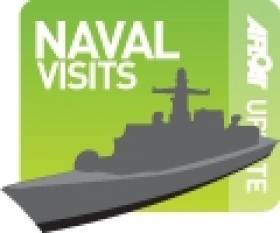Displaying items by tag: NATO Standing Mine Countermeasures Force
Visiting NATO Naval Flotilla Gather in Cork's City Quays
#NATOnavalVisitors – A flotilla of naval vessels from NATO's Standing Mine Countermeasures Force are on a visit to Cork this bank holiday weekend following a fortnight of exercises, writes Jehan Ashmore.
More than 300 sailors from the following European navies; Belgium, Germany, Netherlands, Norway and Poland have docked along the city's central quays. They arrived into Cork Harbour on Thursday under the escort of the Naval Service's OPV L.E. Aisling (P23) which too had tied-up on the city quays.
The naval flotilla will be open to the public between (2-5pm) on Sunday and Monday.
Since the start of this year, the force group six-strong mine-clearance flotilla, have carried out operations throughout the Baltic, North Sea and the Low Countries.
Next Tuesday, the flotilla are heading to UK waters followed by Faroese Islands and Iceland and in the north Atlantic, an area where the NATO force task group were first deployed having been formed in 1973.
The current operations are not just to make shipping safe from recovering explosives devices dating from the last two world wars but are also to combat international terrorism threats from the sea.
Among the eclectic looking naval ships is the Norwegian Navy's HNOMS HINNOEY (M343) -scroll down the page.This mine-clearance catamaran craft and her fleetmates (see list below) are berthed along the north and south quays close to the Port of Cork Company headquarters.
BNS BELLIS (M916) –Belgium Navy
HNLMS URK (M861) -Royal Netherlands Navy
FGS WEILHEIM (M1059) –German Navy
ORP CZERNICKI (511) – Polish Navy (noting NATO symbol on funnel)
ORP CZAJKA (624) –Polish Navy
HNOMS HINNOEY (M343) – Norwegian Navy
NATO which stands for the North Atlantic Treaty Organization is an alliance of countries from Europe and North America.
The organization provides a unique link between these two continents for consultation and cooperation in the field of defence and security, and the conduct of multinational crisis-management operations.





























































